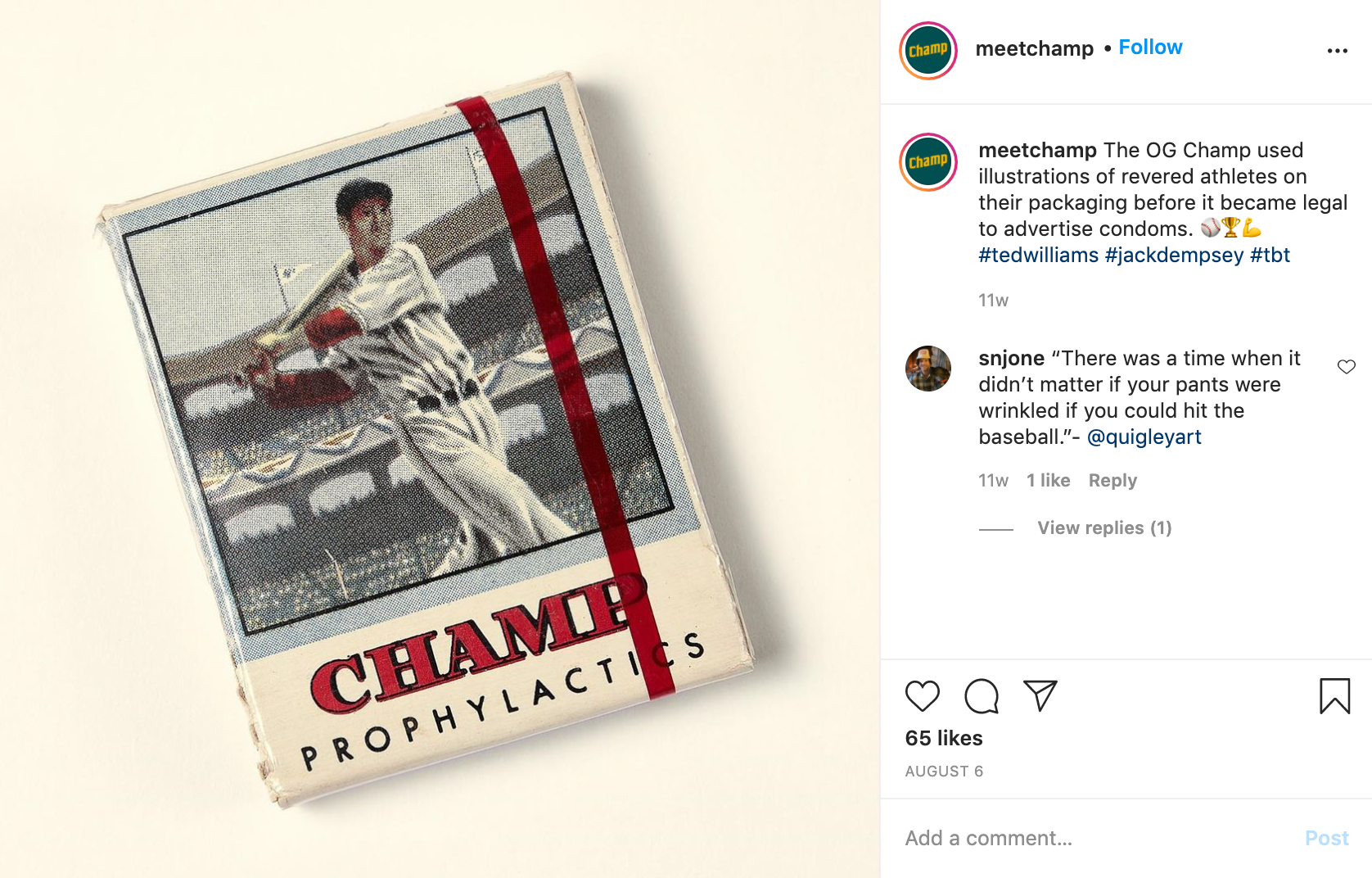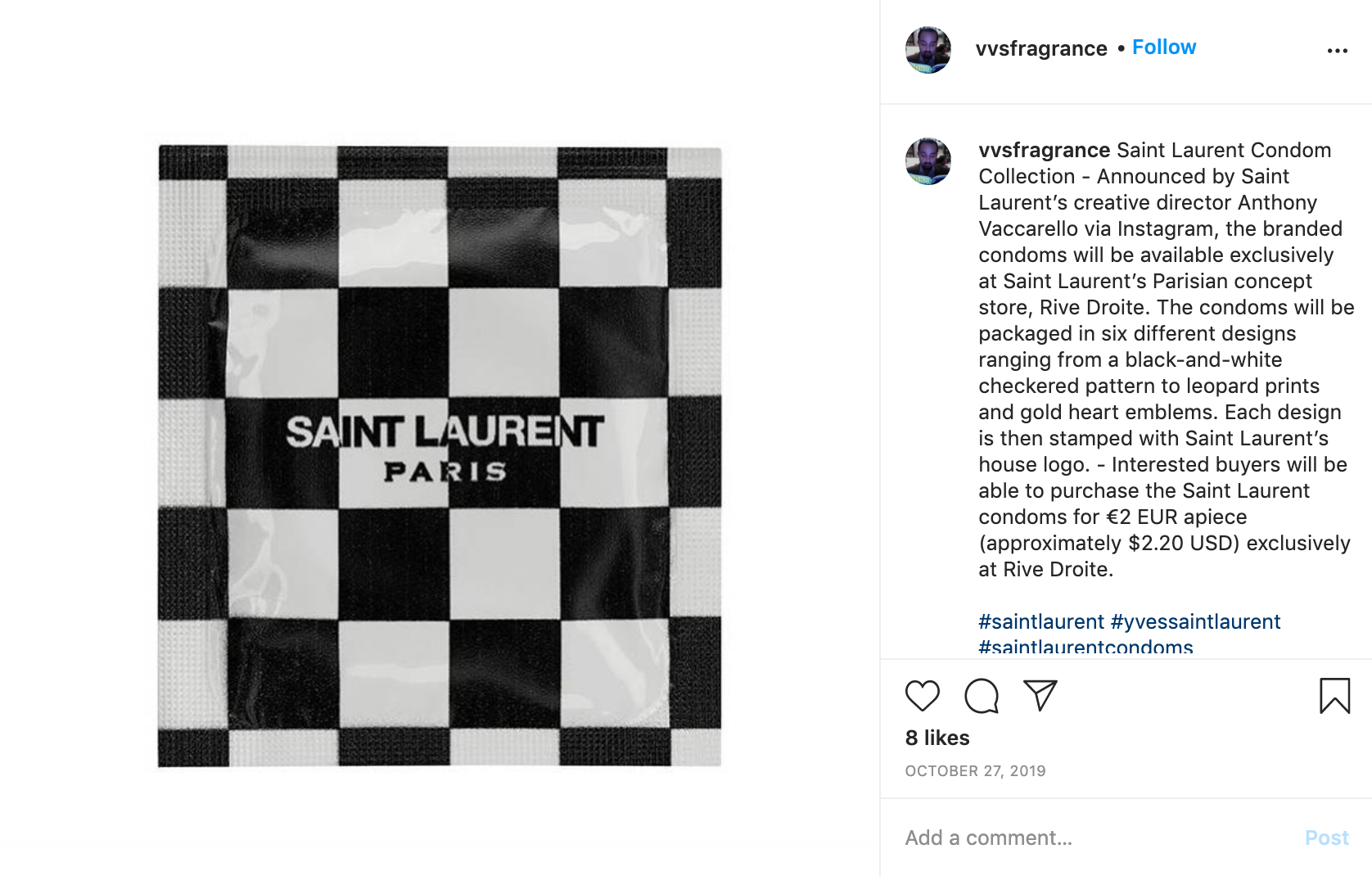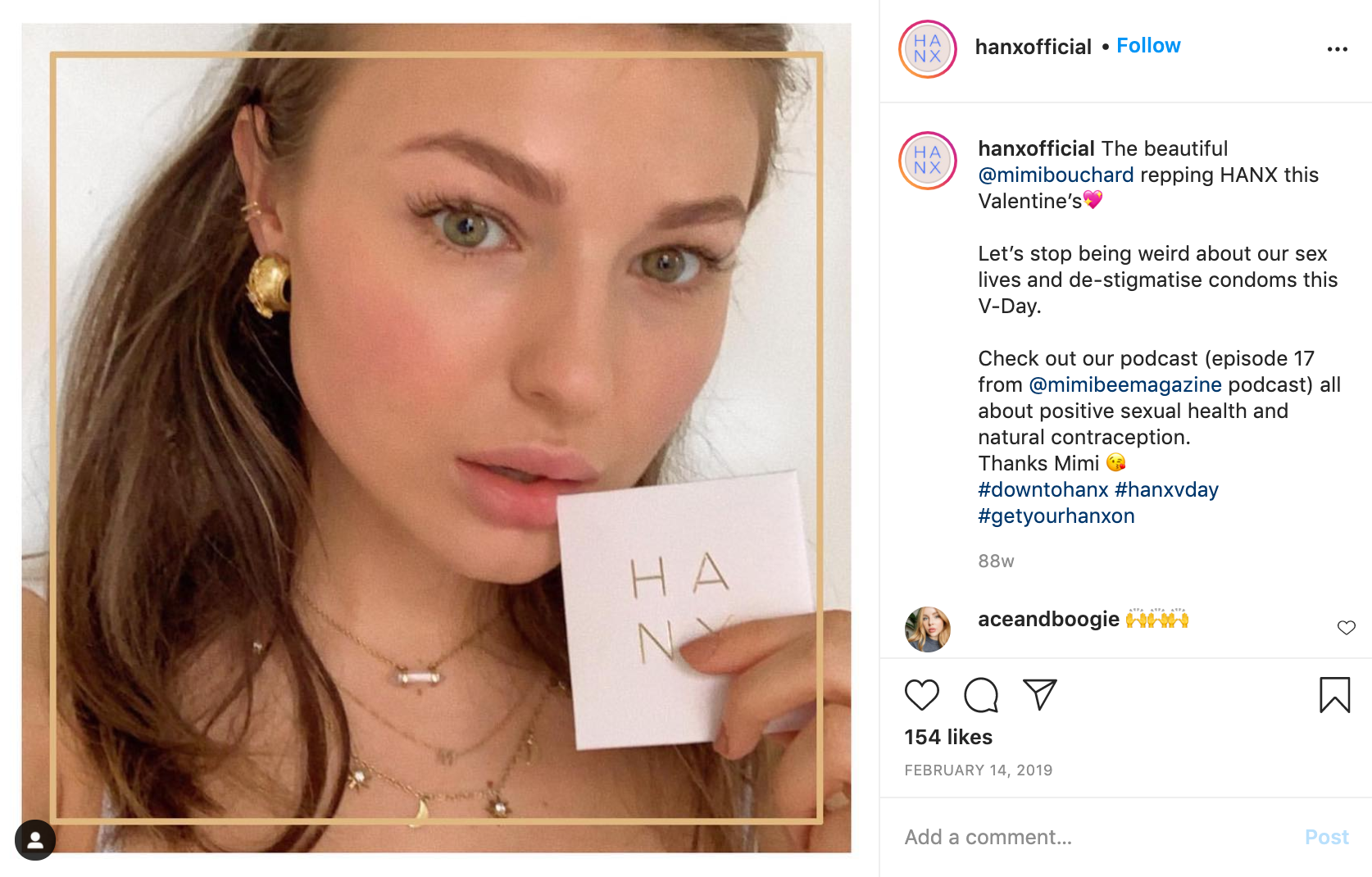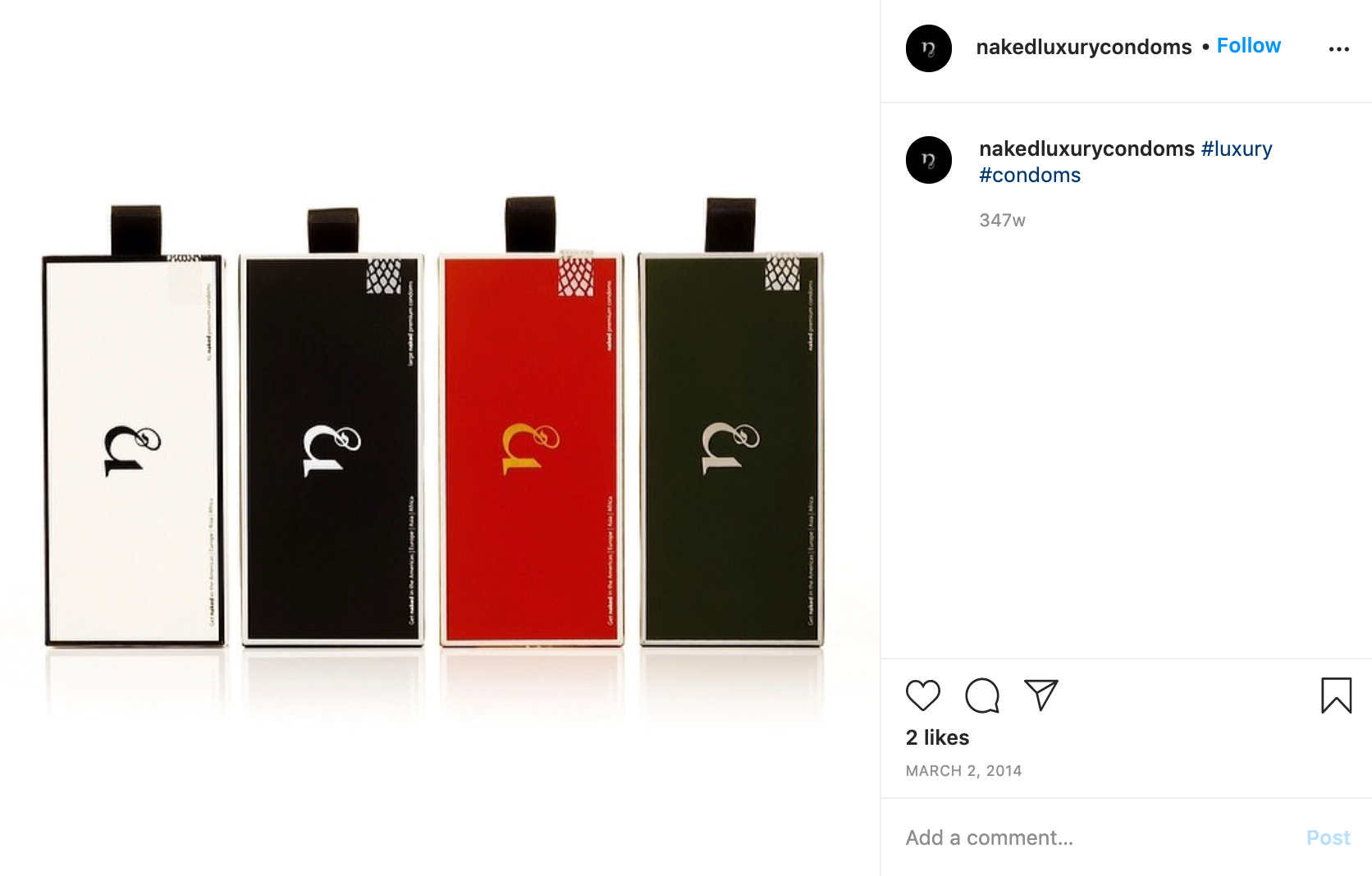About a decade ago, condoms started showing up at high-end sex stores that just looked different from anything else on the shelves. While the established brands came in garish colors emblazoned with splashy fonts, like something made for a high school entrepreneurship contest, these boxes featured striking minimalist design. While the known entities screamed out promises of pleasure and ecstasy with exclamation points aplenty, these newcomers cooly introduced their conscientious consumer credibility with simple statements like “No parabens. No glycerine.” They were, in short, the hippest prophylactics on display.
In 2011, Salon, catching onto these new brands, heralded the rise of “a burgeoning industry of fancy rubbers,” defined by high-end vegan ingredients, stylish boxes and wrappers and a commitment to socially and environmentally conscious manufacturing and business practices — all sold at a premium. Bold trend predictions like this rarely hold up, but this one really did.
Months later, Naked Condoms started marketing a box of 12 condoms, wrapped in foils they said took three years to design. They charged $56. In 2016, designer sex-toy brand Lelo released the Hex, a “re-engineered” condom that attracted as much attention for its sleek packaging as for its novel hexagon-pattern structure, originally marketed at $37 for a pack of 36. Even in mid-2020, as the pandemic disrupted global condom supply chains and cut into luxury spending worldwide, Champs, yet another startup, launched a new premium condom, with an emphasis on class and style. Its price tag? Nineteen dollars for 12. As of August, they were looking to spread awareness with a social media influencer campaign.
Meanwhile, a 12-pack of old-fashioned Trojans goes for about $8 on Amazon. Twenty-four LifeStyles SKYN condoms will set you back all of $11.

Those are just a few of the last decade’s seemingly endless self-proclaimed “luxury condom” brand launches. We also witnessed the birth of Hanx, Lola, Loveability, Royal, Sustain and many, many more.
“We’re approached almost every week about stocking new condom brands from startups,” a representative from the major retailer Condom Depot told me last year. Around the same time, a rep from the freshly launched P.S. — a brand that bills itself as “the Harry’s for condoms” — claimed that “new high-end condom brands are focused on a more aspirational market,” and that their focus has turned to “lifestyle branding more in line with today’s millennial and Gen Z consumers.”
In fact, condom startups projected such a posh image in the 2010s that traditional designer brands even got in on the trend. Louis Vuitton made a $68 condom in 2017; Alexander Wang centered a capsule collection for Pride Month in 2018 on the Protect Your Wang condom; and Vetements sent out invitations to a fashion show last year on specially made, super-exclusive, ultra-luxe condoms.

Condoms could certainly use a little innovation. Far fewer people use them — regularly or at all — than they should, which has contributed to a huge spike in STI transmissions in the U.S. over the last decade. Some of that non-usage stems from horrid sex ed and waning fear of STIs, but it’s also due to chronic dissatisfaction with the experience of buying or using condoms. Still, the condom industry’s new(ish) obsession with the aura of luxury and disruption through design is vexing to longtime insiders and observers. They know that consumers are almost always unwilling to try new products once they’ve settled on one — or to pay more for condoms than they do now — facts even the luxury brands acknowledge.
“Some people will for sure pay more,” says Naked’s Jud Ireland. “But the number is small.”
This raises some questions: Why are so many people trying to make luxury condoms happen? And who, exactly, do they think wants to buy their luxe, wallet-busting skins?
To answer those questions, you must first stop and consider the humble dildo.
Over the last few decades, the so-called “wellness industry” has exploded from a cultural fringe to a multitrillion-dollar industry, fueled in no small part by entrepreneurs and influencers who’ve tinged assorted tonics and treatments with an aura of aspirational yet attainable luxury.
During the same period, wellness movers and shakers have also slowly normalized open and honest sex talk, integrating sexual health into their cultural and industrial milieu. As a result, sex toys have moved beyond the archetypal cheap, ghoulish dildo in a seedy porn shop, to a diverse range of thoughtfully and elegantly designed products that sit comfortably in chic boutiques and mass-market pharmacies alike — and command higher price points than anyone would have imagined a generation ago. To wit, old-school, simple rubbery plastic pink dildos cost just over $12 at most sex shops to this day. Meanwhile, at the high-end adult boutique chain Babeland, the “beautiful, luxurious, stainless steel” njoy eleven dildo goes for $400. Similarly, Lelo’s Earl, a 24-karat-gold “distinguished gentleman’s [butt] plug,” goes for $2,950 on the brand’s website. And those aren’t even the most expensive sex toys to hit the market in recent years. Fast-growing and evolving, sexual wellness has been a hot entrepreneurial market for years now.
From the outside, condoms seem like one of the least developed and highest potential sectors of the sexual wellness world — at least in theory, the vast majority of consumers both could and should buy and use them on a regular basis. And when companies do market surveys, their current and potential future consumers often say they want new and better condoms. In the eyes of a layperson, it can look like the handful of firms that own the space — mainly Durex, LifeStyles, and Trojan, but also Global Protection, Glyde, Okamoto and a few others — haven’t done much in the way of substantive branding or product innovation in decades. That makes condoms seem like an exciting new frontier for wellness acolytes and adventurous entrepreneurs.

“The incumbents have been selling an average product, in terms of the materials used and the packaging and branding, at high volumes and for low prices,” P.S. explains. “The whole experience they sell is subpar and outdated — the Trojan man, etc.”
P.S. thinks it can do better. It, and other companies, also seems to believe that by offering a classier condom, it can entice some people to buy condoms for the first time, and others to use them more regularly.
Many condom startups have also been open about the fact that they’re trying to port tactics and tropes that have worked in the wider wellness industry into the realm of rubbers. This includes hyping their use of clean, natural and ethically sourced materials. “We assumed that, in other industries, people are changing things by… showing their ingredients and the processes of how their products are made as much as possible,” Neil Mehta of Royal tells me. “So, we kind of did the same thing.”
Consumers, though, have made it abundantly clear that they don’t need bells and whistles — they just want cheap condoms. Reliability and comfort are factors, sure, but not at the expense of affordability or accessibility. Davin Wedel of Global Protection believes this reflects the fact that condoms are “one-time use products, and often a convenience purchase,” bought as a necessity to facilitate sex. They’re not long-term investments like sex toys, or products people buy because they believe they will enhance or add something new to their sex lives, like fancy creams or supplements.
Consumers almost never pay more than $1 for a single condom, and many pay less than a quarter each if they buy in bulk or online. At least one study on condom consumption actually suggests that the higher prices go, the fewer condoms people buy. Not to mention, many really don’t pay for condoms at all, sourcing their skins through free governmental or nonprofit prophylactic programs. As such, most of the growth in the condom market in recent years seems to stem from the expansion of those programs, as well as the rise of online condom warehouses like Condom Depot, Condomania and Lucky Bloke, which sell cheaper condoms with greater discretion.
In fact, one of the only things people say they would be willing to pay more for is a condom that doesn’t feel like a condom. Or better yet, a condom that actually improves the raw, physical sensations of sex. Researchers have proposed a number of big, bold innovations to meet those desires — new materials like graphene and hydrogels that can transfer a more direct sense of skin-to-skin contact come to mind, as do new features like nanotexturing and electric pulses to turn condoms into wearable, mutually pleasurable sex toys. Some have even started working on prototypes.
But big innovations can cost tens of millions of dollars and take years to research. And, while consumers might pay a bit more for a revolutionary condom, it’s not clear how many of them would flock to a new product, how quickly or how much more than a buck they’d be willing to shell out. So, recouping those costs would be a slow process at best — a fact that chills investor and entrepreneur enthusiasm. That’s a big part of why we haven’t seen many major innovations in condoms, aside from the introduction of non-latex materials like polyurethane in the 1990s (popular with people with latex allergies and sensitivities) and polyisoprene in the 2000s (allowing the development of beloved ultra-thin condoms, like the LifeStyles SKYN line.)
It’s also why so many new condom brands focus on marginal changes, marketed as revolutionary and luxurious. “We thought about what real value we could add without spending hundreds of thousands of dollars reinventing something that already works pretty well,” Royal’s Mehta tells me. “How could it be enhanced just by making it more healthy, with better ingredients and by making sure that the supply chain was well taken care of so that you’re not adding preservatives or any other crap to it?”

Small changes can yield substantive benefits for condom users, though. By all accounts, slow progress on cutting down thickness without sacrificing safety and improving fit — often by increasing the number of sizes available — have drastically improved condom comfort and functionality for many users over the past couple of decades. Still, as Ken Lassiter of the adult retail mega chain Adam & Eve explains, such “subtle benefits” rarely ever end up selling at a higher-than-average price point. Even getting people to pay attention to subtle differences and consider paying an average price for them — to snap them out of the sexual status quos — takes some real marketing effort, he adds.
Jason Panda of b Condoms, which claims to be America’s only Black-owned condom business and sells a “premium quality, organic, vegan and all-natural rubber latex condom,” points out that distributors have attracted new condom users through better tailored and more culturally savvy marketing, geared toward very specific communities (some have even gotten them to pay higher-than-average price points, too.) So, leaning into the luxury buzzwords that startups’ market research says will appeal to their target audiences — and has worked for other wellness products — seems like a viable tactic for selling people on marginal changes.
Yet the Condom Depot rep notes that LifeStyles originally tried to use luxury branding to sell people on their non-latex SKYN line, only to backtrack a couple of years ago to “packaging that looks a lot simpler and more akin to their other products.” This, they suspect, was because the focus on luxury and identity branding distracted from SKYN’s actual innovations. (LifeStyles didn’t reply to my request for comment about their and others’ luxury branding efforts.)
So, the few startups whose condoms do bring meaningful innovations to the table risk muddying their appeal with splashy aspirational branding. And those who are really just selling an identity and a message plastered onto familiar condoms, argues Melissa White of Lucky Bloke, will face backlash from disappointed consumers. (The jury is still out on how many people can actually feel the difference of paraben-free condoms made of fair-trade latex.)
At this point, it will probably come as no surprise that the brand that started the luxury condom trend — Sir Richard’s, founded in 2009 — dropped off the grid a couple of years ago. A number of other luxury brands have also silently faded away within the space of a couple of years, or pivoted to focus more on lubes and other sexual wellness products instead, as the major, established brands have continued to dominate top sales and review charts. Surviving brands like b Condoms and Einhorn have focused less on luxury and more on social messaging, values and creating a sense of community, while keeping their prices at or below $1 per condom. Even Naked has jacked its prices way down, to about $13 for a six-pack. Ireland says new iterations of their condoms will be “luxury products for the masses.”

For those of us weary of entrepreneurial bluster and wellness excess, this may feel like justice: Finally, a sturdy wall that cannot be knocked down by buzzwords and style, or by minimal and affordable tweaks passed off as the answers to the problems you never knew that you had — a set of consumers who only reward substantive yet affordable improvements to their quality of life.
However, from another point of view, the failure of luxury condoms is also disappointing. We don’t necessarily need condom disruption and innovation to get more people to use protection. Better education about sex and condoms, and more open and honest conversations about how to find the right fit and type for you, would go a long way to addressing public-health crises. Still, truly disruptive condoms, using radically new materials, wouldn’t hurt those efforts. Nor would it hurt to bring existing condom users more variety, and potentially game-changing new sensations.
But the only way we’re going to get those fundamental innovations is if researchers slog away on small-scale passion projects for decades, subsidized by trickles of grants or the proceeds of more lucrative ventures. Or if consumers prove that at least some of them are willing to dump more cash into condoms, freeing up capital for producers and making condom innovation projects more appealing to potential investors.
Yet whenever I show a friend the latest luxury condom I’ve gotten my mitts on, they look at me with bemusement, no matter the branding. It’s not because I’ve, for example, just pulled out a face-sized condom box at a brunch table. Most of my close friends expect that from me at this point. They just cannot find the rhyme or the reason in paying more than a buck a piece.
“Why would anyone buy those?” one female friend asked me when I showed her a package of Naked condoms this weekend. “Don’t most condoms already work just fine?”

